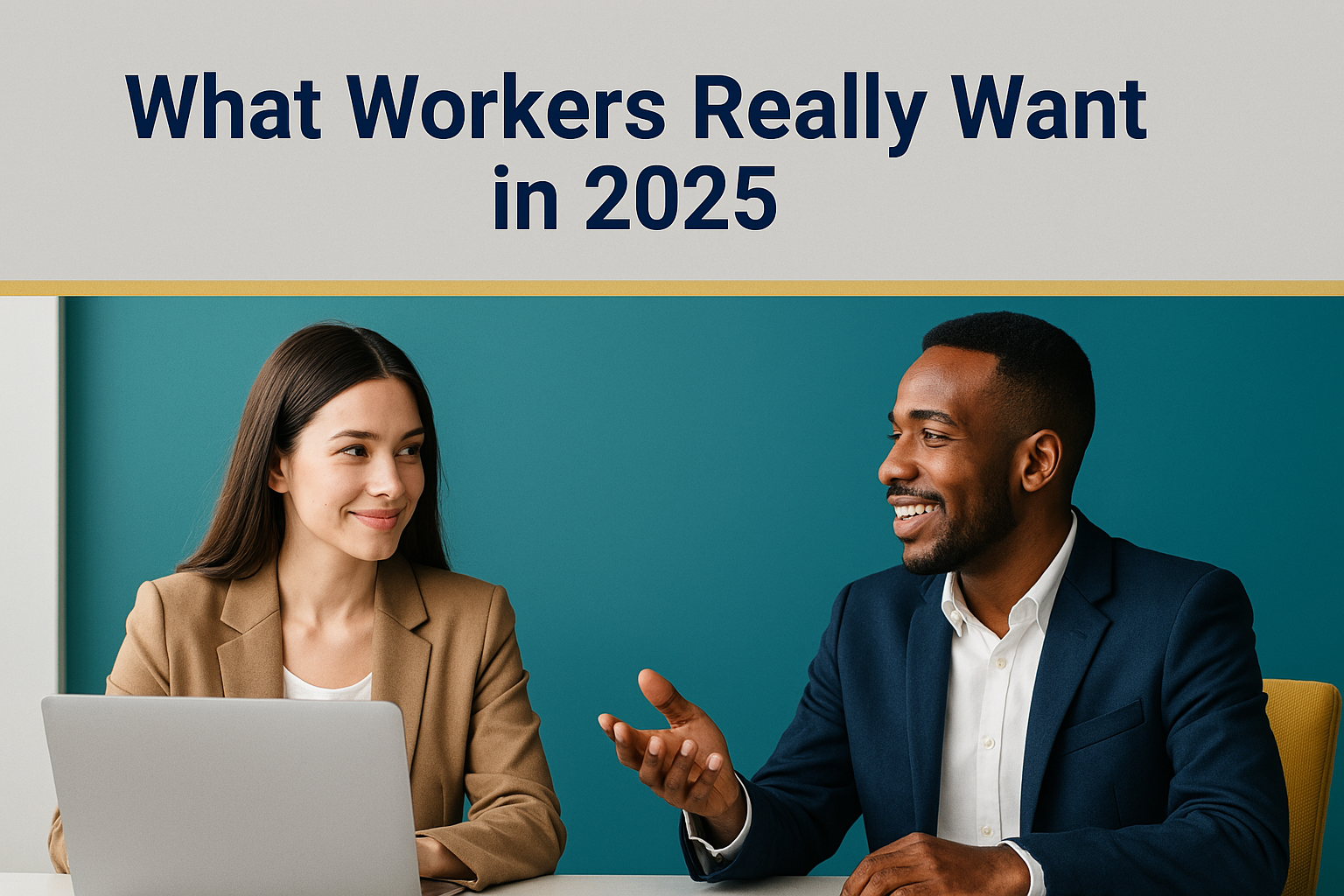What Workers Really Want in 2025: Office, Remote, or Something New?
Level: Intermediate • Date: April 15, 2025
Read the article aloud on your own or repeat each paragraph after your tutor.
A New worker Preference in 2025: Flexibility Over Location
A new global survey has revealed a surprising truth about workers’ preferences in 2025: most professionals no longer want to be tied to just one location. Instead of choosing between being fully remote or fully in the office, they are asking for something in between—flexibility. This trend shows that the traditional 9-to-5 model is being replaced by a more dynamic way of working that better reflects how people live and what they value today.
The Rise of Hybrid Work
While many workers enjoyed the freedom and comfort of remote work, they also began to feel isolated from their coworkers. Over time, many realized they missed the connection, spontaneous collaboration, and creative energy that often come from working together in person. These social and professional interactions play a key role in building trust and team spirit. That’s why the hybrid model—a mix of home and office work—has become the top choice for many. It offers both independence and opportunities for teamwork, satisfying worker preferences in 2025 for flexibility without losing the benefits of in-person collaboration.
Why Flexible Jobs Win Talent
Companies that offer this flexibility are now more attractive to top talent. These organizations are seen as forward-thinking and people-centered, which helps them stand out in a competitive hiring market. In fact, 3 out of 4 professionals say they would choose a job with flexible options over one with higher pay but strict office rules. This shows that for many professionals, quality of life and autonomy are more valuable than salary alone. As worker preferences in 2025 continue to evolve, flexibility is becoming a key factor in attracting and retaining the best employees.
How Managers Are Adapting
Managers are also learning to lead hybrid teams more effectively. Instead of measuring productivity by the number of hours worked, they now focus on results and outcomes. This shift helps create a more trusting and respectful environment. Team leaders are encouraged to set clear expectations and give employees the autonomy to manage their time. Communication is also evolving—weekly check-ins, shared digital tools, and clearly defined goals are now essential for keeping hybrid teams aligned and motivated. These changes reflect a broader understanding of worker preferences in 2025 and the need for more adaptive leadership styles.
What People Really Want at Work
So, what do workers really want? Balance. A schedule that fits their lives. A workplace that trusts them to do their best work without micromanagement. And a company that understands people work best when they feel supported—not just with resources and tools, but emotionally and mentally as well. Workers are asking for more than just a paycheck; they want purpose, respect, and a voice in how their workday is shaped. These values are at the heart of worker preferences in 2025 and are shaping how companies recruit, retain, and empower their teams.
Vocabulary
- flexibility (n.) – ability to adapt or change easily – Many employees want more flexibility in their schedules.
- hybrid (adj.) – combining two different things – She works in a hybrid role: part office, part remote.
- connection (n.) – the feeling of being close or linked to others – In-person work creates more connection among teams.
- top talent (n.) – highly skilled and desirable workers – Companies are competing to hire top talent.
- attractive (adj.) – appealing; drawing interest – Flexible jobs are more attractive to job seekers.
- strict (adj.) – not flexible; following exact rules – Some companies have strict return-to-office policies.
- check-in (n.) – a short meeting to give updates or support – We have a weekly check-in with our manager.
- goals (n.) – targets or results you aim to achieve – Clear goals help teams stay focused.
- balance (n.) – a healthy mix between two things – Work-life balance is a top priority now.
- supported (adj.) – feeling helped or encouraged – Employees perform better when they feel supported.
Discussion Questions (about the article)
- What did the survey reveal about work preferences in 2025?
- Why do many workers prefer hybrid work?
- What makes a flexible job attractive to professionals?
- How have managers adapted to hybrid work?
- What are the top things workers want from their workplace?
Discussion Questions (about the topic)
- Do you prefer working from home, in the office, or a mix of both? Why?
- How does flexibility in work affect your daily life?
- What are the pros and cons of remote work?
- Do you think managers should focus more on results than hours?
- What would your ideal work schedule look like?
Idiom of the Day
“the best of both worlds” – a situation where you enjoy the benefits of two different things.
Hybrid work gives many people the best of both worlds: freedom and teamwork.
Want more articles like this? Sign up for the All About English Mastery Newsletter for weekly reading practice and tips!
Follow our YouTube Channel @All_About_English for more great insights and tips.


